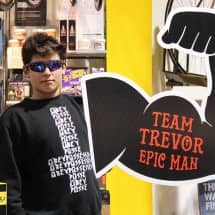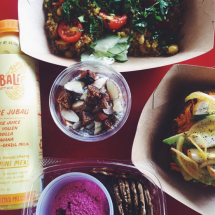The Boston Marathon is Epic
10 Min.
Now that we’re Boston locals, it’s time for the Boston Marathon edition of the JF Blog. Since 1897 the Boston Marathon has been a chance for runners to challenge themselves and push their bodies to the limit. From the first (male only) field of 15 runners to the 30,000 who ran in 2015 the Marathon has become a Boston institution.
Earning Your Spot. As the desire to run the marathon swelled, race organizers realized they would need to limit the entrants in order to maintain safety. A qualifying time cutoff was introduced when, during the 1960s, the country witnessed the start of it’s first significant running boom. As a result, the Boston Marathon starting field size grew at a steady rate from 197 in 1960 to 447 in 1965, and 1,342 by 1969. At the time, B.A.A. officials thought that a field size of more than 1,000 athletes may create a congested course that could compromise the overall quality of the Boston Marathon race experience*.
“A runner must submit the certification of either the Long Distance Running chairman of the Amateur Athletics Union of his district or his college coach that he has trained sufficiently to finish the course in less than four hours. This is not a jogging race” – 1970 race application
Ouch! Fortunately, for those of us who fall more in the “jogging” camp, the race has grown to include the opportunity to earn a race bib by raising money for charity. Over 30 charities are typically represented by hundreds of runners every year.
Boston Marathon Milestones. The Marathon and the city have a history that is intertwined, in true Boston fashion, there is conflict, joy and tears. Here are a few of my favorite historic Boston Marathon moments.
Monday, April 20, 1936: The last of Newton’s hills was given the nickname “Heartbreak Hill” by Boston Globe reporter Jerry Nason. When John A. Kelley caught eventual champion Ellison “Tarzan” Brown on the Newton hills, Kelley made a friendly gesture of tapping Brown on the shoulder. Brown responded by regaining the lead on the final hill, and as Nason reported, “breaking Kelley’s heart.”
Tuesday, April 19, 1966: Although not an official entrant, Roberta “Bobbi” Gibb became the first woman to run the Boston Marathon. Joining the starting field shortly after the gun had been fired, Gibb finished the race in 3:21:40 to place 126th overall. Gibb again claimed the “unofficial” title in 1967 and 1968.
Wednesday, April 19, 1967: By signing her entry form “K. V. Switzer,” Kathrine Switzer became the first woman to receive a number in the Boston Marathon. By her own estimate, Switzer finished in 4:20:00.
Monday, April 21, 1975: Bob Hall became the first officially recognized participant to complete the course in a wheelchair. Hall was granted permission to enter the race provided that he covered the distance in under three hours. Hall finished in 2:58:00, signaling the start of the wheelchair division in the race.
Monday, April 16, 2012: Weather conditions reached almost 90 degrees along the course. The 500,000th finisher in the 116-year history of the Boston Marathon crossed the finish line. I especially remember this one – because I was there running!
The JF Connection. Jewett Farms + Co. has a strong culture of athleticism and altruism. We have supported Team Trevor and the Cystic Fibrosis Foundation for many years, especially during Boston Marathon weekend because of EpicMan. A wild adventure that includes kayaking 2.4 miles and then cycling 160 miles from Portland ME to Hopkinton MA (through the night!) and then running the Boston Marathon. We will be riding with Team Trevor and the EpicMen again this year and then participating in a Boston Marathon tribute – a Team Trevor relay that includes runners from all over the community joining together to cover 26.2 miles on Marathon Monday in the name or Team Trevor, raising awareness for Cystic Fibrosis.


Fueling for the Big Show. Endurance athletes need fuel! Our favorite spot for tasty, plant-based meals, snacks, and juices is the Jubali Farmacy Cafe, in the containers on Drydock ave. This year Jubali has released a special smoothie – taste and run approved by the companies co-founder Brian Axelrod, and he should know as an 8-time marathoner and 2016 Boston runner. Marathon Bliss is modeled after the classic workout recovery drink: chocolate milk. Marathon Bliss is totally dairy-free, made from bananas, almond milk, cacao, hemp protein, espresso beans, maca, and honey. Throughout the month of April, runners can bring their Boston Marathon bibs into the café and receive a free bottle of Marathon Bliss.


A Legend of a Race. The Boston Marathon truly is a special event. There are very few marathons with it’s history or sense of camaraderie. Every single inch of the 26.2 mile course is lined with spectators. From the screaming tunnel at Wellesley college which will make your ears ring in a way unlike anything else, to the suffering of Heartbreak Hill, crazy (drunken?) students at BC and the emotion fueled finish line. No matter if you’re a runner or a cheering spectator, the experience of the Boston Marathon one of a kind.


JF Content creator and marketing director. Olivia loves beautiful spaces, inside and outside. When she’s not writing and talking about gorgeous kitchens Olivia can be found riding her bicycle around the country.
